Gluten Free Long Term Food Storage – Everything You Need to Know
This post may contain affiliate links. Read our disclosure policy here.
Would you like to prep some food for the future? Here’s a look into what we are storing in our gluten-free long-term food pantry and how we are storing it.
Long Term Gluten Free Food Storage
I think that back in 2020, many of us were blindsided when it came to grocery shopping. All of the sudden, everything shut down, and there was a mad rush to stockpile everything you could think to get your hands on.
Unfortunately, our family was right in the middle of a move, and we didn’t have much of any food storage. I would go to the grocery store to shop for ten people (our family and my parent’s family) and find very little. Most of what was on the shelves was pre-packaged and boxed products, things we didn’t usually eat. Fruits and vegetables were few and far between.
It was a time that I’d rather not repeat. While our family isn’t prepping for the zombie Apocolypse or the end of the world or anything like that, we do believe that it’s prudent to have things on hand that we may need in the event that they are difficult to get or we don’t have the money or resources to get them.
It is also important for our family to store things that might help others in a bind. For more info on why and how we prepare for difficult situations, read this blog post —> How to Prepare for Difficult Times.
What Is Long-Term Food Storage?
Long Term Food Storage is food that can be stored away for at least 5 years without going bad. It’s not the same as typical bulk food buying and pantry storage.
Honestly, mylar bags and oxygen absorbers have never really been my thing. We’ve always stocked up our kitchen pantry and decided that was good enough. But we happened to have a month where we had a little extra and could find the items, so we decided to do a little long-term stocking up.
I’ve seen a lot of info on making long-term food storage in a typical pantry, but since we are gluten and dairy-free, we don’t have a typical pantry. Storing wheat berries will do me more harm than good! So I thought I should share some gluten-free grains we are stocking up on and things we aren’t.
How Much Long Term Food Storage Do I Need?
How much food storage you need will depend on what you are storing food away for and what you have the space to store.
A year’s worth of food might be difficult to achieve (especially if you have a family) but it could be a goal to attain to. We’ve found it easier not to have a specific goal in mind as far as how long our food storage will last and instead focus on adding a little bit to it whenever we are able.
Do You Need to Buy Organic?
Feel free to buy organic if you feel more comfortable and your budget allows. If you can afford conventional and want to plan ahead, that’s absolutely fine too. We all need to do the best we can in the situations we are in and never feel pressured to buy something we can’t afford.
I was able to get organic for the particular stock-up that you will see in the video below, but that’s only because our source for dry goods through our coop only does organic.
Disclaimer….we believe food storage is just a small part of long-term preparedness. Gardening, knowing how to can, being able to live without electricity, having non-food items…all of those things are just as important in a well-rounded long-term plan.
Gluten-Free Foods for Long-Term Food Storage
Here are some things we hope to add to our long-term food storage. All of these items store well for many years when stored properly.
- Whole Corn
- Whole Oats
- Whole Sorghum
- White Rice
- Quinoa Pasta
Some of the things we could store but our family doesn’t eat much of:
- Whole Millet
- Quinoa
- Corn Pasta
- Whole Buckwheat
- Teff
Non-grain long-term gluten-free food storage items:
- Potato Flakes
- Arrowroot Powder
- Baking Soda
- Dry Beans
- Lentils
- Freeze-Dried Foods (You can even buy pre-packaged freeze-dried foods from places like Auguson Farms, we’ve done that too!)
Items you shouldn’t store long term:
- Nuts
- Seeds
- Brown Rice
- Brown Rice Pasta
- Flax
- Flours
Freeze-Dried Foods to Consider
You can get many things that are freeze-dried to put away in your long-term food storage. Most freeze-dried foods have up to a 25-year shelf life. We used to have a freeze dryer but didn’t find it to be worth the money (both the upfront expense and the ongoing expense). Freeze-drying foods is a great way to preserve the nutrients and minerals (and the taste!) in many different foods.
Now we’ve been slowly purchasing some freeze-dried foods from Auguson Farms. (You can get 10% off your purchase from them with the coupon code LITTLEHOUSELIVING.)Here are a few ideas on what you can get that is freeze-dried and might be good for your food storage plan.
- Eggs
- Beef
- Chicken
- Tuna
- Onions
- Garlic
- Cheese
- NonFat Dry Milk
Make sure you check the ingredients on any item that you are purchasing to make sure that it fits with your diet.
I know many more things could be added to these lists of survival food, but this is a general list based on what our family eats. If you are considering storing anything long-term, be sure your family will eat it and that it doesn’t contain a high amount of natural oils. Anything with high oil will go rancid much quicker and shouldn’t be stored in long-term food storage.
How To Store Food Long Term
You Will Need:
- Mylar Bags (I use Gallon and Two Quart, Wallaby is the best choice for bags)
- Oxygen Absorbers (500cc for Gallon Bags and 300cc for 2 Quart Bags, you can also buy the packs from Wallaby that include the bags and the oxygen absorbers)
- Impulse Heat Sealer (or you can use an iron)
Putting away the emergency food supply is very simple!
All you need to do is place your grain in the mylar bag. Don’t fill it all the way full; about 3/4 of the way full is good. Fill up as many mylar bags as are in one pack of oxygen absorbers. (For example, fill ten bags if you have ten oxygen absorbers in a pack).
Use the impulse sealer to seal the one open edge of the bag.
Write the contents and the date on the bag.
What About Vacuum Sealed Foods?
If you don’t want to purchase mylar bags and have a Vacuum Sealer at home. You could place your long term food storage in vacuum seal bags with an oxygen absorber.
While it’s better than nothing and better than simply storing foods on your pantry shelves, I wouldn’t recommend this method if you want to be serious about your long-term food storage. Mylar bars (when properly sealed) do not allow any light or moisture content into your foods, helping keep them good for longer.
I’ve had too many foods done up with my vacuum sealer suddenly come unsealed after a while so it’s not a method I personally trust to keep my food safe for a long-term storage situation. I do, however, like using a vacuum sealer for freezer foods.
Food Storage Containers
Place all your food storage in a dark, dry area if possible. Non-clear plastic totes work well for this.
You could also place the bagged food in food-grade plastic buckets with a regular or Gamma Lid.
Either way, the bags must be stored in some container or 5-gallon buckets to help make them pest-proof. If pests such as insects and rodents have access to your mylar pouches, your hard work could go to waste very quickly.
Do not store your long-term food storage dry foods in plastic bottles, small clear plastic containers, or in glass jars. While these are fine for typical pantry storage, they do not provide the space or the darkness needed for long-term food storage.
If you still aren’t sure about this process and what to store, I made a video for you! Check it out below.
One more note: If you store whole grains, you need a grain grinder to make them into flour. I have and can recommend the Wonder Junior Deluxe Manual Grinder from Pleasant Hill Grain. (We have the drill adapter for it as well.)
Where Do I Get Supplies for Making Long-Term Food Storage?
Here are some of the places that we get our supplies from for creating our long term food storage.
Food
We get our dry foods from our own bulk foods coop. I usually just put away a bag or two out of a bag of food that I would typically buy for our household anyway. For example, if I buy a 10lb bag of quinoa pasta, I will put away 2lbs in long-term storage and use the rest to fill up my regular pantry jars. This helps to keep it from getting overwhelming. If you don’t live in Wyoming or South Dakota to be able to get food from our coop, I would recommend Azure.
I’ve also started getting some freeze-dried foods from Auguson Farms. It comes already packed in a can with an oxygen absorber…ready to be stored! Auguson Farms is offering 10% off their store (at any time) for Little House Living readers when you use the coupon code LITTLEHOUSELIVING at checkout.
Mylar Bags and Oxygen Absorbers
I have previously used the bags that came with my freeze dryer (when we had it) and then just ordered random mylar bags on Amazon. More recently, I purchased Mylar Bags from Wallaby, and now I wish I’d never used the other bags because they pale compared to the Wallaby Bags!
Wallaby is offering Little House Living readers $5 off their purchase (plus free shipping over $25) with the coupon code LHLIVING.
I buy the bag and absorber kits from Wallaby, so I don’t have to buy the oxygen absorbers separately.
And there you have it, the basics of gluten-free long-term food storage! It doesn’t need to be complicated, and it also doesn’t need to be done all at once. If you find a great deal on some bulk whole grains your family eats, that’s the perfect thing to grab and put away one bag at a time.
Do you have any food put away in long-term storage? What gluten-free foods or grains do you store?
Did you find this post helpful? Be sure to share it with your friends on Facebook, Instagram, Twitter, Pinterest, and through Email using the sharing buttons below!

This article on Long Term Food Storage was originally posted on Little House Living in March 2022. It has been updated as of April 2023.

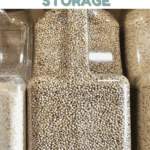
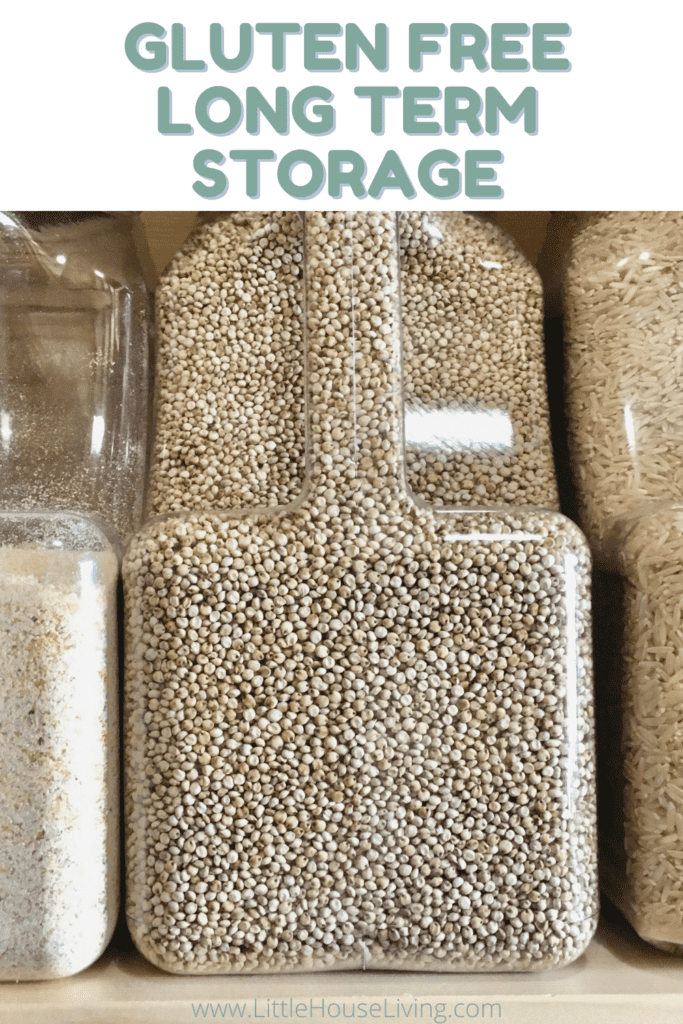
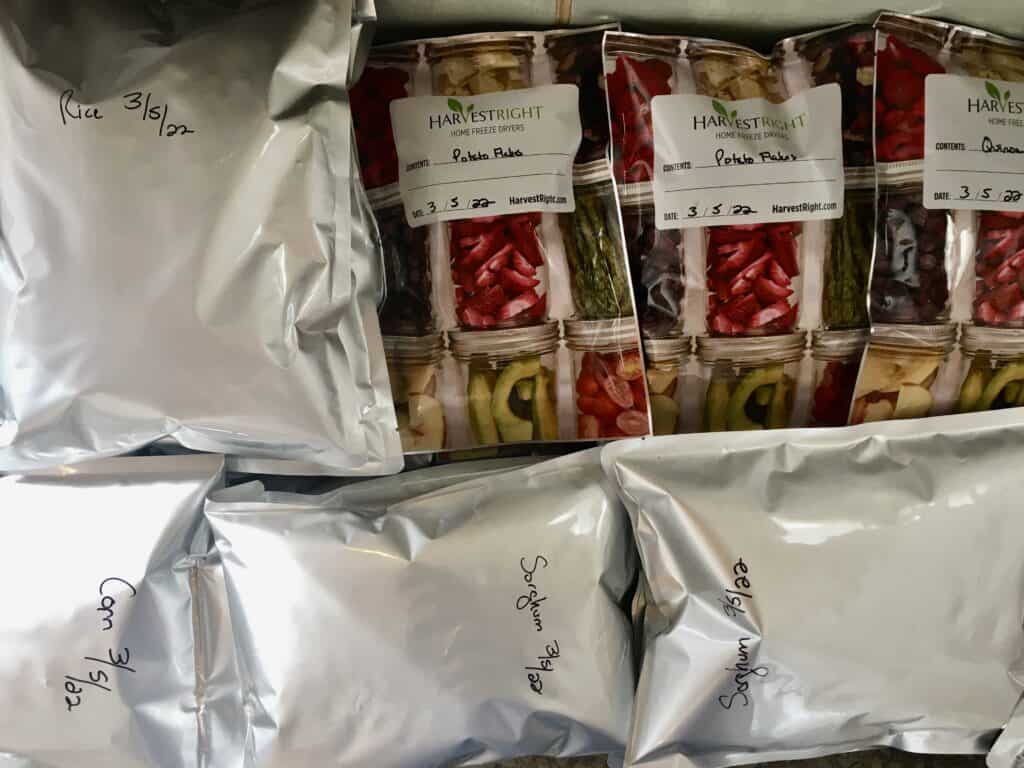
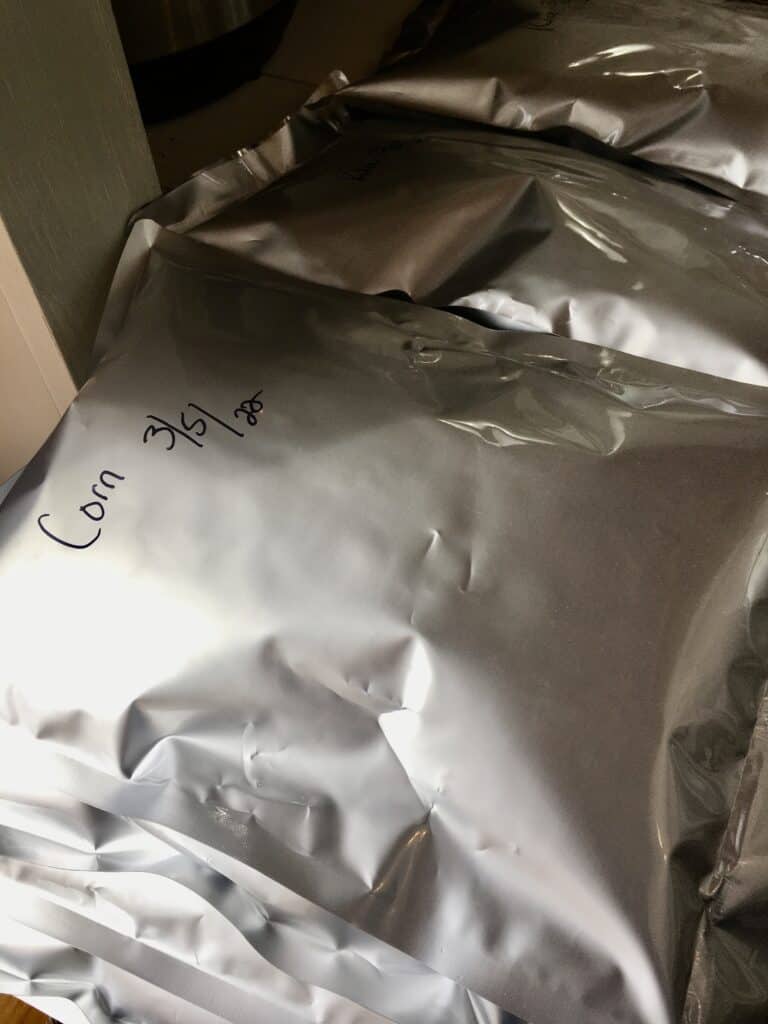
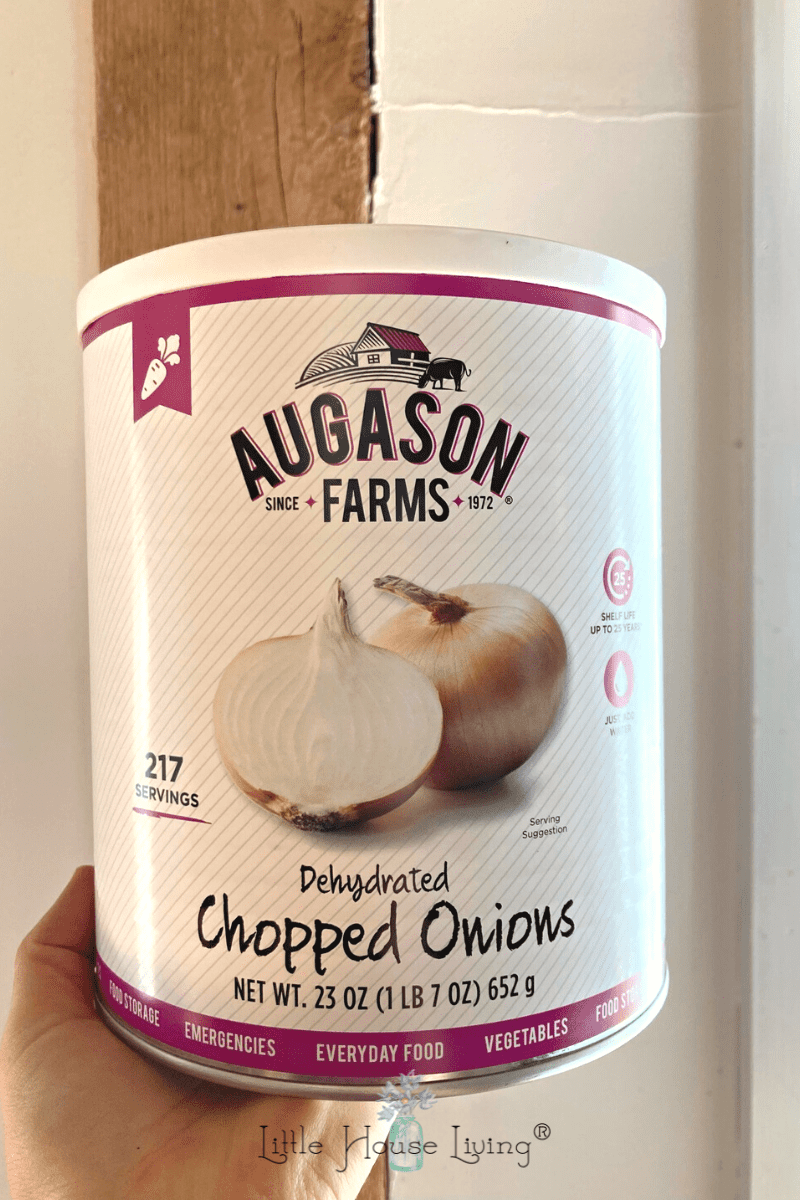
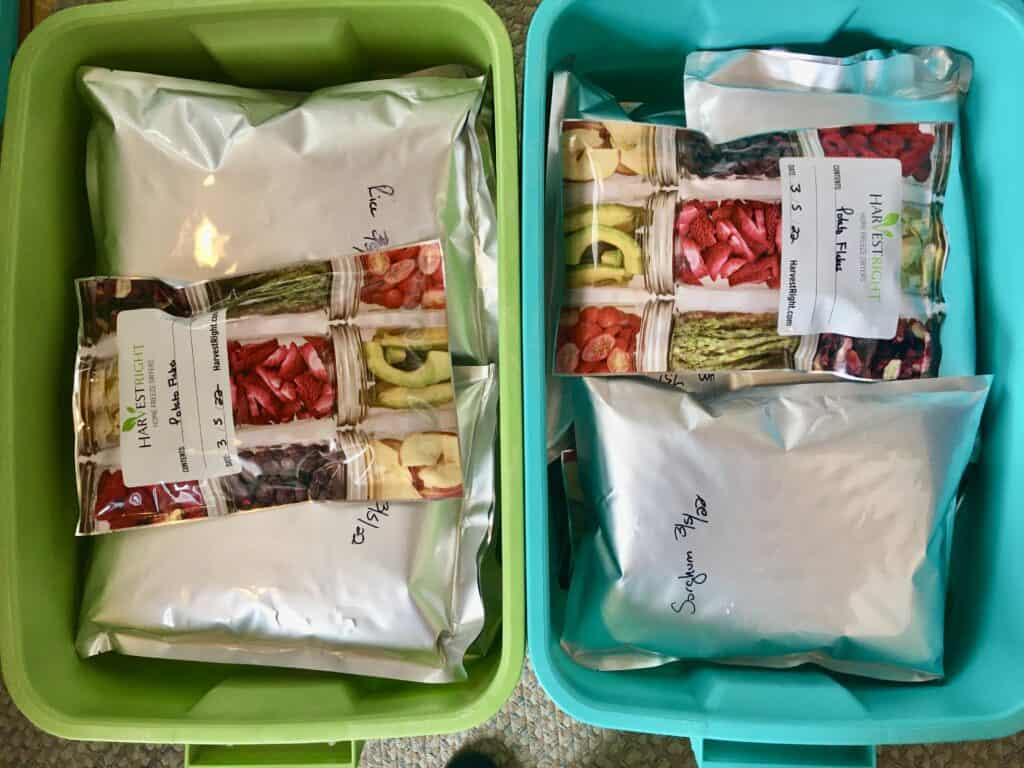
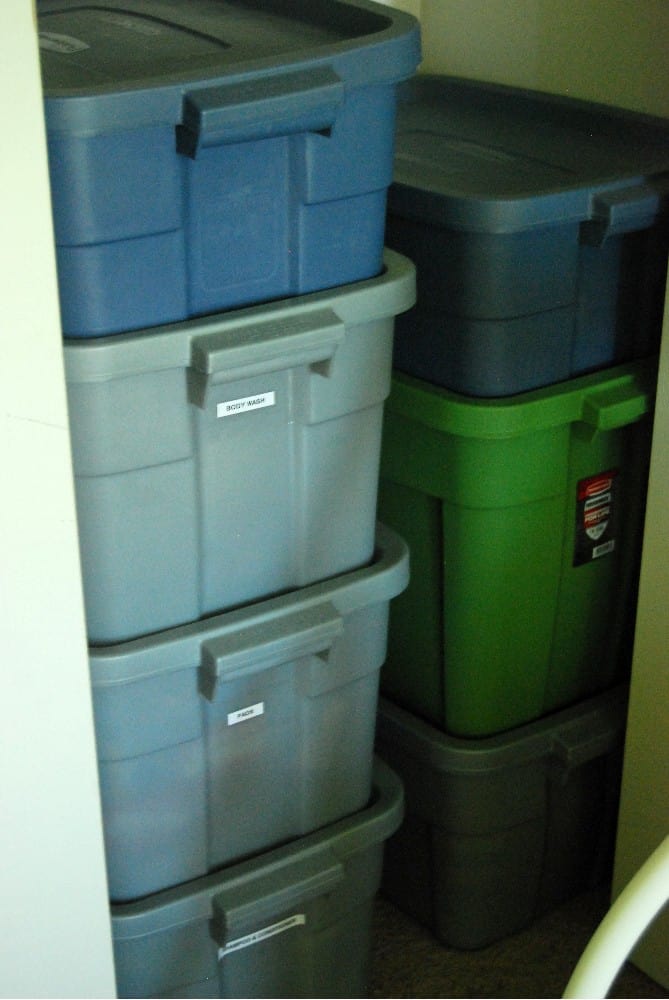
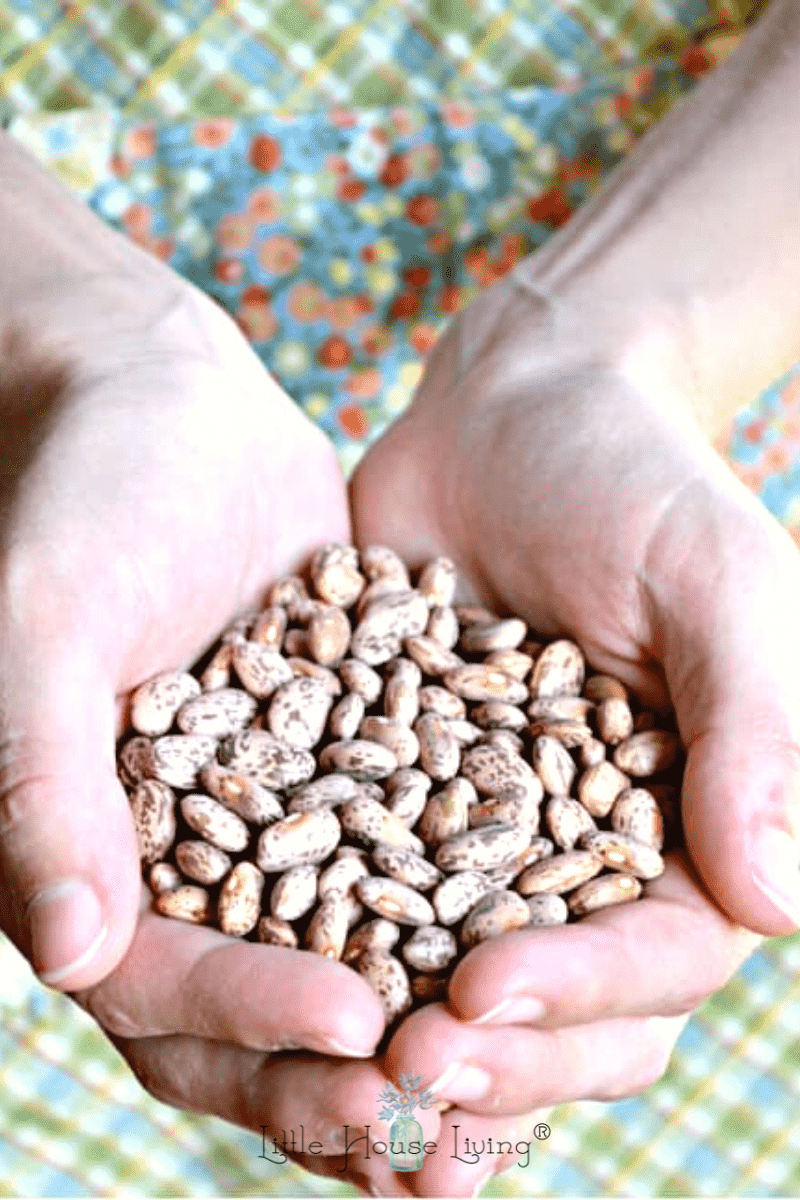

Sprouting seeds and garden seeds last a few years, but I have heard that they won’t sprout/grow if they are deprived of oxygen. So no vacuum sealer, no mylar bag, and no oxygen absorber. Salt, sugar, and honey last for years, as well, but no oxygen absorber for sugar, either, as it will turn into a solid chunk.
Yes, I keep my garden seeds stored in one of those “pelican” cases. That seems to work well and I’ve been able to germinate seeds that are years old. Good reminder on the salt, sugar, and honey! That’s why those are just on my shelf instead 🙂
I remember when you were living in the trailer. Have followed you for years and you approach to shopping ,
and ways to straight the budget are perfect. How old are the boys now?
Our kids are now 10, 7, and 4…getting so big! 🙂
Need gluten free long storage for household one.
Great advice. We’ve been talking about doing something like this too as we are also a dairy and gluten free household.
One of the things I didn’t mention on this post was that I found some coconut milk powder that I also put in mylar bags as well. I’m not sure exactly how long that will store because I couldn’t find much info but we figured it wouldn’t hurt to have a small amount on hand for our “dairy”.
Hi Merissa,
One thing that I noticed when watching Alone, is that even with enough food, the people were starving and their brains weren’t functioning well because they didn’t have enough fat to eat. While fat doesn’t store quite as long, coconut oil and ghee last quite a while. I did can butter last year, even though you’re not really supposed to, and it is lasting really well. It even tastes like clotted cream, which I adore. What provisions have you made for fat?
We have some large containers of coconut oil put away as well as a few of olive oil in tins (stores longer in tins). We are going to be raising pigs this year so I will also have lard to render and put away. (We currently have tallow too). Good point!
Not sure about coconut oil but coconut milk and coconut cream do not last much past the expiration dates. The fat turns rancid.
I’ve noticed that our coconut milk has very short dates. I’m hoping that the coconut milk powder we bought will last a little longer.
I’m storing some foods to give to my granddaughter with Celiac Disease. I found plain, frozen, potato shreds and plain mixed vegetables and some broccoli. I know she likes them. I dehydrated them and will place them in one quart bags with oxygen absorbers.
I also will bag up some rice and potato flakes.
Yes, we are a low gluten household. Wheat noodles are a rare item for us. I have stocked up on rice. However, it is Jasmine, brown. I have also stocked up on Oats and pearlized farrow aka Spelt. I will be mylar bag them and put in lidded food safe buckets. I do not grind the rice into flour. I have heard that Flaked oats can be made into flour using a humble food processor. Because of food allergies in the family, I have cookbooks with plenty of recipes for Oat flour baked goods. That is my tentative plan.
If we store GF flours in mylar bags with absorbers… how long will they last
Flour isn’t recommended for long term storage as it can get rancid, even in mylar bags. If you do decide to store it I wouldn’t store it for longer than a year, especially if it has brown rice flour in it. Storing the grains used to make a gluten free flour blend and having some kind of grain mill would be the best for long term.
Do you consider Mylar bags safe? Could there be a possibility of toxic leaching?
Can you share your GF flour blend – after grinding. I learned the hard way that I wasted GF flour that has short expiration dates.
This is a good video.
So I don’t have a “quick blend” that I make from the stored goods. My gluten free flour recipe is here: Gluten Free All Purpose Flour
The breads that I make using the ground stored materials are different and don’t use that quick blend. Sorry if that’s confusing! Those breads typically use millet flour, rice flour, and some kind of starch.
Also, can you use the sealer on your vacuum sealer to close a mylar bag?
Or can you use a hair straightener?
I’m not sure about the vacuum sealer heat seal. I have seen people use a hair straightener but I haven’t tried it personally.
Ok thank you. to clarify: So the GF Flour recipe is for quick blend from flour already milled and ready?
Is there also a recipe for the grains you grind for bread.
What do you use the quick blend for? I assume current needs, cookies, pancakes, muffins, etc?
thank you for your help.
Your website is very helpful.
I use the quick blend for this like muffins, quick breads, etc. I don’t currently have a recipe posted using the ground up grains. It’s on my never-ending to-do list :p
Hi there, do you store your grains you may want to sprout in pelican cases? Or do you just mean smaller amounts of regular garden seeds?
I was hoping to mylar pack some grains that could be eaten or used in the garden, but didn’t realise the lack of O2 would mean they don’t sprout. Do you think in a food grade bucket it will be too vulnerable to rodents?
thanks
I store seeds in a pelican case. All food is in the 5 gallon buckets with gamma lids for short term use. Long term is stored like I showed in this blog post.
Thank you for all of the good information. I will not be able to use all of it but enough
You can freeze pasta , chips, eggs, milk, flour, cornmeal, bread , butter, and beans.I do this all the time .
I am a member of an annual Community-wide Preparedness Fair being held in Fargo, ND on September 9th, 2023. One topic of many which is new to present this year is “gluten-free” long term food storage.
I read your blog here, and seen your video (March 5 2022) and loved it!
Would you have anything like brochures or information flyers or write-ups that I could place on a Display booth, or anything I could hand out? Something attendees could take home and use as a resource? I could make copies?
Since you did mention your entire family is gluten free, would you have simple recipes that could be used with the long term food storage? Any thoughts you may have as to what would catch the eye and belief of the Attendees, so that they will go home and try it out? And what to store safely and use wisely?
Thank you so much … please write me… I definitely would like your help…
Hi Lenore, I’d love to help with this! I will email you.
Hi Merissa,
Do you know which is better to use for shredded dehydrated foods like zucchini: oxygen absorbers or silica gel packs? Thanks so much for all your great tips and advice.
I use the silica gel packs for short term storage and oxygen absorbers for long term (when stored in Mylar bags).
Your posts and resources are such a blessing! Trying to start a little stockpiling but my husband and toddlers are all gluten and dairy intolerant and didn’t know what to store for them. This relieves so much stress for me! I grew up learning how to do sooo many self sufficient things as my mom ground her own wheat, had her own garden, and sewed our clothes sometimes too when money was tight. Now I’m trying to relearn a lot of those things I forgot how to do over the years and all your info has been so helpful!